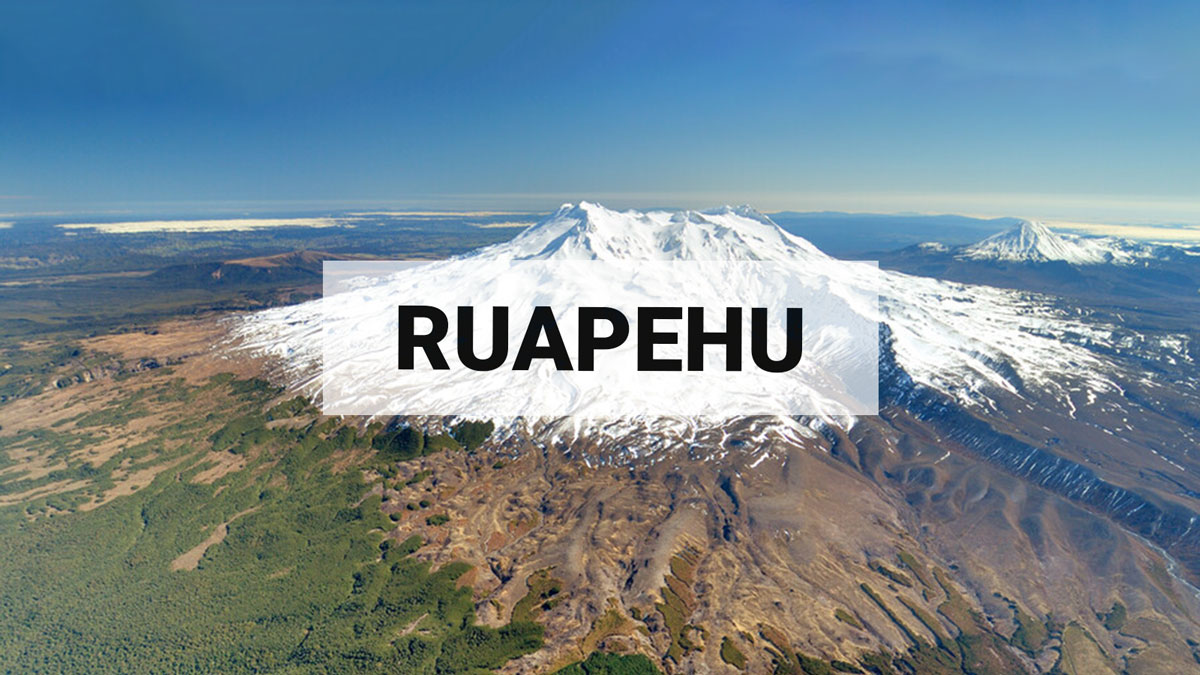
Heightened volcanic unrest continues at Mt Ruapehu with volcanic gas output, strong tremor and steam plumes: Volcanic Alert Level remains at Level 2.
High levels of volcanic gas emissions and strong volcanic tremor continue at Mt Ruapehu. The Crater Lake (Te Wai ā-moe) temperature has risen to 41°C and steam plumes can be observed in cold, still atmospheric conditions. The volcano is still at a heightened level of unrest. The Volcanic Alert Level remains at 2, with greater chances of eruption over the next four weeks than at Volcanic Alert Level 1.
Last week, steam plumes were observed over Mt Ruapehu’s Crater Lake (Te Wai ā-moe). Observation flights have confirmed these steam plumes were not caused by an eruption. Instead, they were related to a combination of increased heat flow at the crater lake and still, cold atmospheric conditions. Over the last 12 days the Crater Lake temperature has peaked at 41 °C following a four-week period at 36-38 °C. Our modelling suggests that maintaining the lake temperature and recent rise has required ~300-400 MW of heat energy.
Since early-March we have been recording strong volcanic tremor at Mt Ruapehu. This is the most sustained and vigorous volcanic tremor recorded in two decades, and it accompanied the rise in crater lake temperature. Although tremor levels remain high, there has been a decline in the tremor this last week.
Overall, the period of heightened volcanic unrest continues. Within the next four weeks, the most likely outcome of this unrest episode is minor eruptive activity that is confined to the lake basin, or no eruptions. This level of activity may generate lahars (dangerous volcanic mudflows) in the Whangaehu River. The next most likely scenario is a larger eruption that impacts the summit plateau with volcanic surges and generates lahars in multiple catchments, like what was seen after the September 2007 eruption, or older events like those in 1975 and 1969. An eruption of this size would cause life-threatening hazards on the summit plateau and in valleys impacted by lahars.
The chance of a prolonged eruptive episode or a larger eruption, such as occurred in 1995-96 with wider ashfall impacts, is higher than it was two months ago, but within the next 4 weeks remains very unlikely. Such an eruption would most likely only follow a sequence of smaller eruptions.
Due to the heightened volcanic unrest, GNS Science staff are carrying out more frequent aerial observations, gas measurements and Crater Lake sampling. A gas measurement flight on 4 May 2022 confirmed high sulphur dioxide (SO2) and carbon dioxide (CO2) fluxes, respectively of 260 and 1970 tonnes per day of gas. Both gases are indicator gases derived from relatively shallow magma bodies. Observations from the gas flight and 2 additional observation flights have confirmed upwelling of central vent and northern vent areas continues. Further flights will be conducted when weather conditions are suitable.
The high sulphur dioxide (SO2) and carbon dioxide (CO2) gas output and sustained strong volcanic tremor, continue to indicate that molten rock (magma) is driving this period of heightened unrest. Increasing Crater Lake temperature is reflecting the increasing upwelling of hot fluids and gases through the active vents. Available laboratory analysis of the latest Crater Lake fluid and gas samples show high temperatures in the hydrothermal system but no reaction with the magmatic material.
Our interpretation of the observational data and activity is consistent with elevated volcanic unrest at the heightened level and therefore the Volcanic Alert Level remains at Level 2. The Aviation Colour Code remains at Yellow.
Mt Ruapehu is an active volcano and has the potential to erupt with little or no warning when in a state of elevated volcanic unrest.
The Volcanic Alert Level reflects the current level of elevated volcanic unrest. The Volcanic Alert Level should not be used to forecast future activity. However, at Volcanic Alert Level 2, eruptions are usually more likely than at Volcanic Alert Level 1.
Volcanic Alert Level 2 indicates the primary hazards are those expected during volcanic unrest; steam discharge, volcanic gas, earthquakes, landslides and hydrothermal activity. While Volcano Alert Level 2 is mostly associated with volcanic unrest hazards, eruptions can still occur with little or no warning. Volcanic Alert Levels 3, 4 and 5 relate to eruptions.
For information on access to the Mt Ruapehu area, please visit the Department of Conservation’s websites on volcanic risk in Tongariro National Park and follow the DOC Tongariro Facebook page for further updates.
For information about responding to volcanic activity there are guidelines from the National Emergency Management Agency's Get Ready website.
GNS Science and its National Geohazards Monitoring Centre continue to closely monitor Mt Ruapehu for further changes.
Brad Scott Duty Volcanologist
Media Contact: 021 574 541 or media@gns.cri.nz